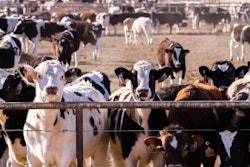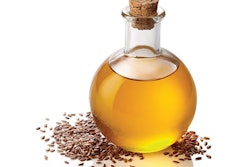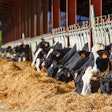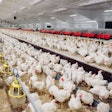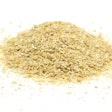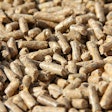
Feeding more than 5% linseed meal in broilers is not recommended.
The interest in feeding animals with linseed (flaxseed) meal – or even whole full-fat seeds – remains strong, and it will only continue to increase. The main reason is the abundance of omega-3 fatty acids in linseed oil and their effect on animal health and disease prevention through a stronger immune system. In the case of ruminants, there are additional factors that make linseed meal a prized raw material.
Feeding more than 5% linseed meal in broilers is not recommended. Research and empirical evidence suggest a drop in animal performance. From a nutritional point of view, once linseed meal is balanced for its nutrient deficiencies against any type of cereal and soy diet, there is no reason why birds cannot handle more of this oilmeal. Nevertheless, there are three theories that have been proposed:
- Linseed contains an anti-pyridoxine factor (that has not yet been identified) that, in high concentrations, reduces dietary and supplemental pyridoxine (B6) availability. In fact, in some trials, adding extra B6 has improved bird performance. Why this is not the case in other monogastric animals remains a mystery.
- Linseed is rich in mucilage that, once in contact with water, becomes sticky. This has been observed in the form of caked feed stuck in bird beaks, resulting in deformed beaks and reduced feed intake. Excess heat treatment (autoclaving) has been shown to eliminate this problem, but this is not a practical application for field employment. In addition, other “sticky” components, like finely ground wheat, can produce similar problems.
- As is well established, linseed contains certain glucosides that, upon enzymatic hydrolysis by an enzyme existing in linseeds, produces hydrogen cyanide – a known poisonous compound. Heat treatment during oil extraction destroys most of this enzyme, whereas any remaining is prevented from activation by the low stomach pH. Perhaps, in rapidly growing broilers that consume large amounts of feed, this enzymes finds the opportunity to activate.
Once more, these are just theories based on limited experimentation and commercial observations. It may as well be a combination of any or all of the above factors that make broilers less tolerant against linseed meal. It is also possible the different varieties of linseed available may contain different concentrations of each anti-nutritional factor. Solving this puzzle has been a task we have worked upon and we have managed to feed up to 10% linseed meal – of certain varieties only – in broilers so that we can produce omega-3 enriched broilers for health-concerned consumers. As it can be seen from our other publications, linseed remains a favorite ingredient of our work worldwide.

